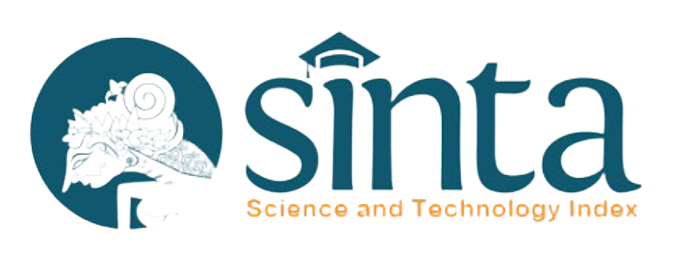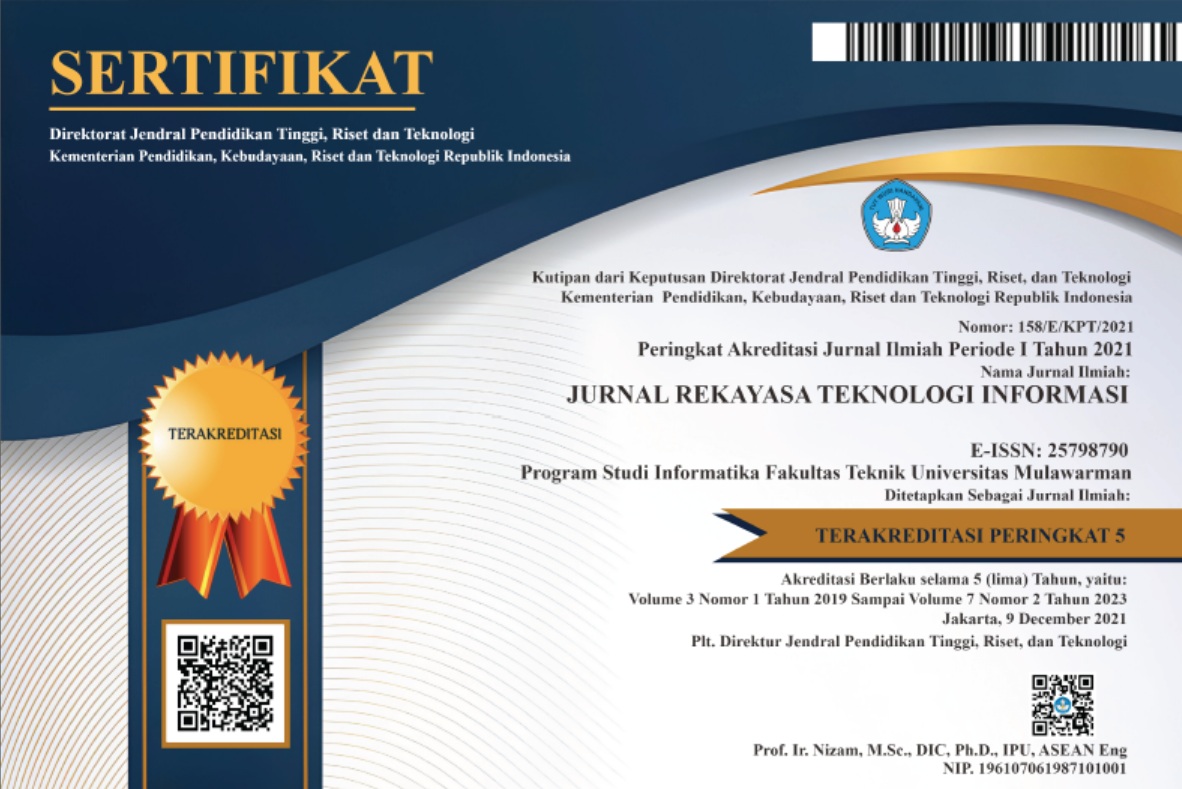Pengaruh Task Technology Fit Pada Generasi X (1965-1980) Dalam Menggunakan Teknologi Cloud Storage
Abstract
Full Text:
PDFReferences
Chin, W. W. (1998). The partial least squares approachto structural equation modelling. In G. A. Marcoulides (Ed.), Modern Methods for Business Research. In Modern Methods for Business Research (pp. 295–336).
D’Ambra, J., & Wilson, C. S. (2004). Explaining perceived performance of the World Wide Web: uncertainty and the task-technology fit model. Internet Research, 14(4), 294–310.
D’Ambra, J., Wilson, C. S., & Akter, S. (2013). Application of the task-technology fit model to structure and evaluate the adoption of E-books by Academics: Application of the Task-Technology Fit Model to Structure and Evaluate the Adoption of E-Books by Academics. Journal of the American Society for Information Science and Technology, 64(1), 48–64. https://doi.org/10.1002/asi.22757
DeLone, W. H., & Mclean, E. R. (2003). The DeLone and McLean Model of Information Systems Success: A Ten-Year Update. Journal of Management Information Systems / Spring, 19(4), 9–30. https://doi.org/10.1073/pnas.0914199107
Eisner. (2005). Managing Generation Y. In SAM 2005 International Business Confrence Proceedings (pp. 4–15). New Jersey.
Fark, R. F., & Miller, N. B. (1992). A Primer for Soft Modeling. University of Akron Press.
Fornell, C., & Larcker, D. F. (1981). Evaluating structural equation models with unobservable variables and measurement error. Journal of Marketing Research, 18, 39–50.
Goodhue, D., & Thompson, R. (1995). Task-Technology Fit and Individual Performance. MIS Quarterly, 19(2), 213–236. https://doi.org/10.2307/249689
Hair, J. F., Ringgle, C. M., & Sarstedt, M. (2011). PLS-SEM: Indeed a Silver Bullet. Journal of Marketing Theory and Practice, 19(2), 139–151.
Hair, J. F., Sarstedt, M., Ringle, C. M., & Mena, J. A. (2012). An assessment of the use of partial least squares structural equation modeling in marketing research, 414–433. https://doi.org/10.1007/s11747-011-0261-6
Hulland, J. (1999). Use of Partial Least Squares (PLS) in strategic management research: a review of four recent studies. Strategic Management Journal, 20, 195–204.
Igbaria, M., & Tan, M. (1997). The consequences of information technology acceptance on subsequent individual performance. Information and Management, 32(3), 113–121. https://doi.org/10.1016/S0378-7206(97)00006-2
Kearns, J. L., & Venugopal. (2007). Understanding Generation Y in The Workplace “What Does it Take to Hire And Retain The Talent of The New Generation ?”
Kubeck, J. E., Delp, N. D., Haslett, T. K., & McDaniel, M. A. (1996). Does job-related training performance decline with age? Psychology and Aging, 11(1), 92–107. https://doi.org/10.1037/0882-7974.11.1.92
Lu, H. P., & Yang, Y. W. (2014). Toward an understanding of the behavioral intention to use a social networking site: An extension of task-technology fit to social-technology fit. In Computers in Human Behavior 34 (pp. 323–332).
Morris, M. G., Hall, M., Davis, G. B., Davis, F. D., & Walton, S. M. (2003). User acceptance of information technology: Toward a unified view. MIS Quarterly, 27(3), 425–478. https://doi.org/10.2307/30036540
Morris, M. G., & Venkatesh, V. (2000). Age Differences in Technology Adoption Decisions : Implications for a Changing Work orce. Personnel Psychology, 375–403.
Morris, M. G., Venkatesh, V., & Ackerman, P. L. (2005). Gender and age differences in employee decisions about new technology: an extension to the theory of planned behavior. IEEE Transactions on Engineering Management, 52(1), 69–84. https://doi.org/10.1109/TEM.2004.839967
Park, J., & Gursoy, D. (2012). Generation effects on work engagement among U.S. hotel employees. International Journal of Hospitality Management 31, 1195–1202.
Tolbize, A. (2008). Generational differences in the workplace. Minnesota: Research and Training Center on Community Living.
Widagdo, P. P. (2016). Terhadap Kinerja Individu Pada Generasi Baby Boomers (1945-1964) Dalam Menggunakan Teknologi Informasi (Studi Kasus : Universitas Mulawarman). Informatika Mulawarman : Jurnal Ilmiah Ilmu Komputer, 11(2), 54–60.
Widagdo, P. P., Susanto, T. D., & Ramadiani. (2016). The Effect of Task Technology Fit Toward Individual Performance on the Generation X (1956-1980) using Information Technology. In 2nd International Conference on Science in Information Technology (ICSITech) (pp. 181–186). Balikpapan: IEEE. https://doi.org/10.1109/ICSITech.2016.7852630
Yen, D. C., Wu, C. S., Cheng, F. F., & Huang, Y. W. (2010). Determinants of Users Intention to Adopt wireless tecnology : An Empirical Study by Integrating TTF with TAM. Computers in Human Behavior, 26, 906–915.
DOI: http://dx.doi.org/10.30872/jurti.v2i2.1871
Refbacks
- There are currently no refbacks.
Copyright (c) 2019 JURNAL REKAYASA TEKNOLOGI INFORMASI

This work is licensed under a Creative Commons Attribution-NonCommercial-ShareAlike 4.0 International License.
Alamat Redaksi :
Program Studi Informatika
Fakultas Teknik
Jl. Sambaliung No. 9 Kampus Gunung Kelua Samarinda 75119 - Kalimantan Timur
e-mail : jurti.unmul@fkti.unmul.ac.id
Url : http://e-journals.unmul.ac.id/index.php/INF
Contact Person : Medi Taruk [081543438301]
This work is licensed under a Creative Commons Attribution-ShareAlike 4.0 International License.











